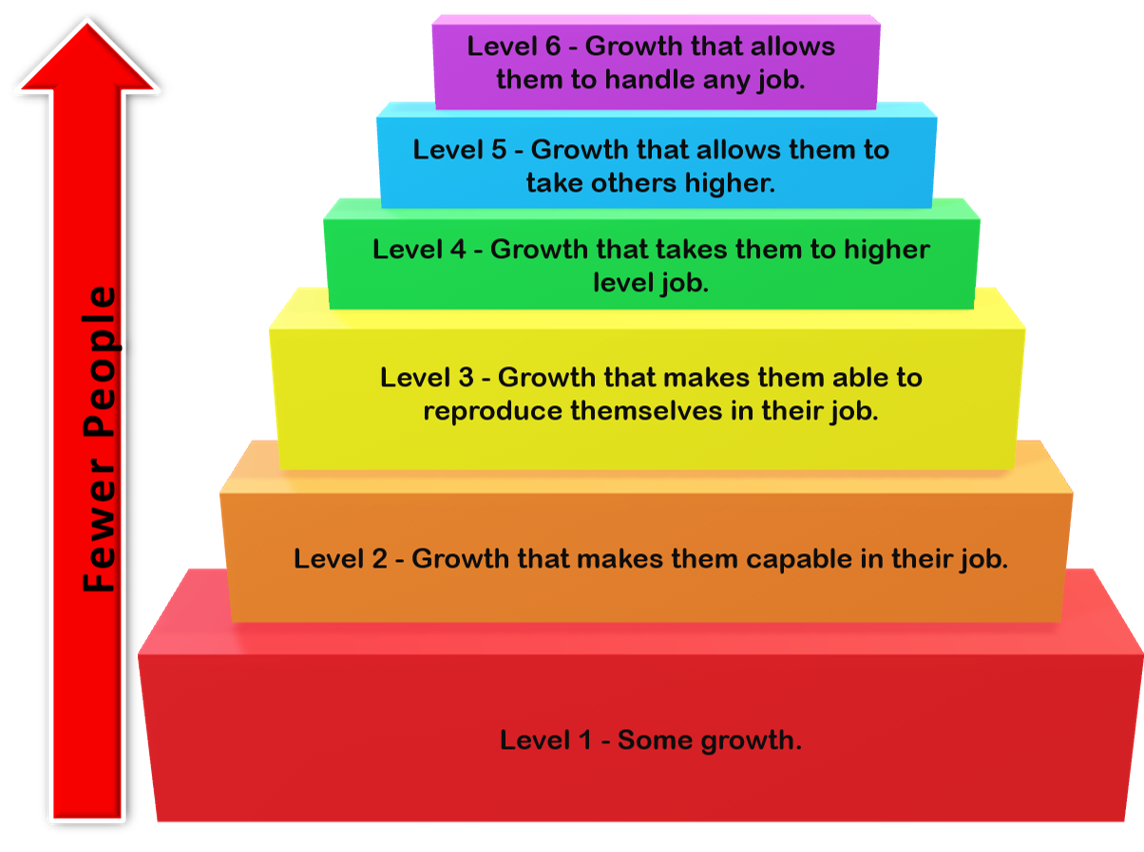People respond differently to growth opportunities. According to John Maxwell (Developing leaders around you), each person who does grow will plateau at one of six levels of development.

Level 1 - Some Growth
Some people experience a growth at a very slow rate and their growth lacks direction. These people improve almost imperceptibly. They may be competent, but they will never shine in their jobs.
Level 2 - Growth that Makes them Capable in Their Job
Many people mistakenly believe that simply doing their job well is the final goal in their development. It is not. Many people without a good developer or a strong desire for personal growth stop here in the growth process.
Level 3 - Growth that Makes them Able to Reproduce Themselves in Their Job
At this level of growth, people are beginning to add to their value because they can train others in their areas of expertise. Some people who are technically strong but have marginal leadership skills can do this. Others with strong leadership skills can do it despite marginal technical abilities. People who are strong in both areas often move up to the next level.
Level 4 - Growth that Takes Them to a Higher-Level Job
The jump from Level 3 to Level 4 is difficult. It requires that people be willing to dedicate themselves to growing both personally and professionally. As they can broaden their thinking and experience, they become more capable and valuable to their organization and leaders.
Level 5 - Growth that Allows Them to Take Others Higher
It is at this level that great leaders begin to emerge. These people are true developers of people and they no longer add value to their leaders and organization – they multiply it.
Level 6 - Growth that Allows Them to Handle any Job
People who develop to this level are rare. If you have the privilege of helping people to this level, treat them with the greatest love and respect. These people are leaders who could make it anywhere. And they have skills and abilities that transcend any field or industry. In your lifetime, if you are blessed with one or more of these people, together, you will have the ability to make an impact far beyond your own individual capabilities.
Look at the figure above. As you can see, the pool of people at each level is represented by a block. The higher the level, the fewer people at that level. You will also notice that each successive jump gets more difficult as the levels get higher. Each takes more commitment, dedication, and tenacity than the one before.
When you are a developer of people, you meet each person on the level where you find him, usually on Level 1, and then you begin a journey. Your job is to walk alongside that person and help him for as long as he is willing to keep going and growing. When that person stops growing, that is when you must do something difficult: You must leave that person behind. Your relationship can continue, but your development of that person will not.
That is one of the more difficult things about being a developer of people. We give people so much time, attention, and love that leaving one behind can be like letting go of one of our children. But you can’t force a person to keep growing to the highest level. You must make the hard decision of leaving that person on his own plateau. It’s difficult, but it’s a price worth paying to develop people.